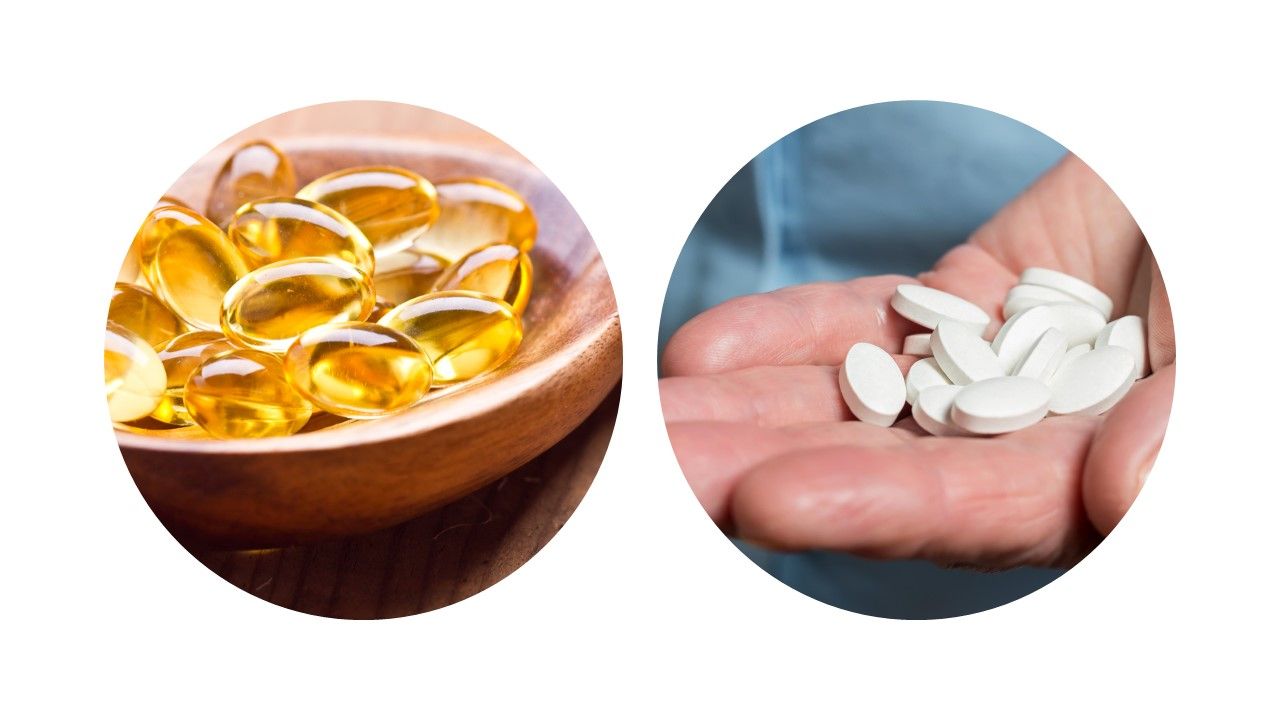Article
Vitamin D-Calcium Combo Daily May Prevent Factures
Author(s):
Neither intermittent nor daily dosing of vitamin D alone was associated with reduced risk of fracture, but daily supplementation with both vitamin D and calcium showed promise in a study recently published in JAMA Network Open.
(©RSzatkowskiShutterstock); (©OFarian,AdobeStock,186198127)

Neither intermittent nor daily dosing of vitamin D alone was associated with reduced risk of fracture, but daily supplementation with both vitamin D and calcium showed promise in a study recently published in JAMA Network Open.
Approximately one in two women and one in five men aged 50 years or older will experience an osteoporotic fracture in their remaining lifetime. The incidence of hip fracture, which has an approximate 30 percent risk of death the following year, increases exponentially with age, particularly among women 60 years or older and men 70 years or older. Meanwhile, low vitamin D status causes secondary hyperparathyroidism, bone loss, and muscle weakness, and lower blood concentrations of 25-hydroxyvitamin D have been shown to be associated with higher risks of falls and fractures.
Combined daily supplementation with 800 IU of vitamin D and 1200 mg of calcium has been recommended for the prevention of fractures in older adults living in institutions and in those with low vitamin D status. However, previous studies have reported conflicting results, with uncertainty about optimal doses and regimens for supplementation and their effectiveness.
In this systematic review and meta-analysis, we “assessed the risks of fracture associated with differences in concentrations of 25-hydroxyvitamin D in observational studies and the risks of fracture associated with supplementation with vitamin D alone or in combination with calcium in randomized controlled trials,” wrote the authors, led by Robert Clarke, M.D., of the University of Oxford in the U.K.
In a meta-analysis of 11 observational studies (39,141 participants, 6,278 fractures, 2,367 hip fractures), each increase of 10.0 ng/mL in 25-hydroxyvitamin D concentration was associated with an adjusted rate ratio (RR) for any fracture of 0.93 (95% CI, 0.89-0.96) and an adjusted RR for hip fracture of 0.80 (95% CI, 0.75-0.86).
“An increase of 10.0 ng/mL in 25-hydroxyvitamin D concentration was associated with a 7 percent lower risk of any fracture and a 20 percent lower risk of hip fracture,” the authors wrote.
In contrast, a meta-analysis of 11 randomized controlled trials (34,243 participants, 2,843 fractures, 740 hip fractures) of vitamin D supplementation alone (daily or intermittent dose of 400-30,000 IU, yielding a median difference in 25-hydroxyvitamin D concentration of 8.4 ng/mL) did not find a reduced risk of any fracture (RR, 1.06; 95% CI, 0.98-1.14) or hip fracture (RR, 1.14; 95% CI, 0.98-1.32).
“But these trials were constrained by infrequent intermittent dosing, low daily doses of vitamin D, or an inadequate number of participants,” the authors wrote.
Meanwhile, a meta-analysis of six randomized controlled trials (49,282 participants, 5,449 fractures, 730 hip fractures) of combined supplementation with vitamin D (daily doses of 400-800 IU, yielding a median difference in 25-hydroxyvitamin D concentration of 9.2 ng/mL) and calcium (daily doses of 1000-1200 mg) found a 6 percent reduced risk of any fracture (RR, 0.94; 95% CI, 0.89-0.99) and a 16 percent reduced risk of hip fracture (RR, 0.84; 95% CI, 0.72-0.97).
“Daily supplementation with both vitamin D and calcium was associated with a 16 percent reduced risk of hip fracture,” the authors wrote, but highlighted that “these randomized controlled trials had a high risk of bias.”
“Further large randomized controlled trials of combined treatment with vitamin D and calcium are needed before advocating vitamin D and calcium supplements or fortified foods with vitamin D and calcium for prevention of hip fracture,” the authors wrote.
REFERENCE
Pang Yao, Derrick Bennett, Marion Mafham, et al. “Vitamin D and Calcium for the Prevention of Fracture: A Systematic Review and Meta-analysis.”JAMA Network Open. December 20, 2019. doi:10.1001/jamanetworkopen.2019.17789




